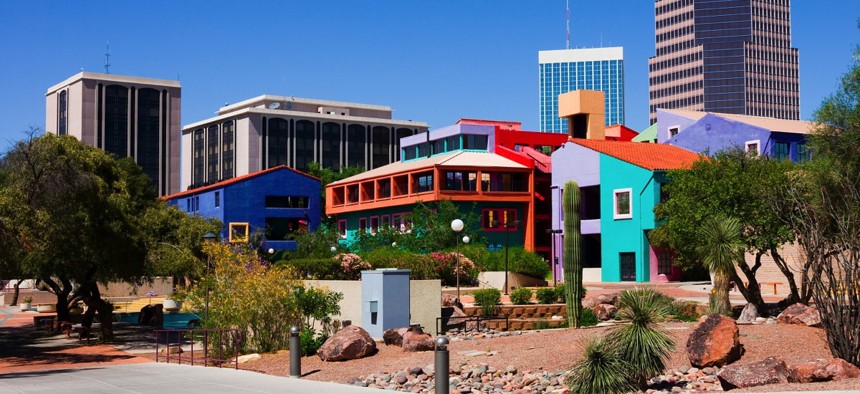Intergovernmental Trends Put Pressure on Arizona’s Second-Largest City

Tucson, Arizona Andrew Zarivny / Shutterstock.com

Connecting state and local government leaders
Tucson Mayor Jonathan Rothschild: “[W]ithout appropriate funding for what can only be communal projects, we are going to continue to struggle.”
TUCSON, Ariz. — Jonathan Rothschild, the first-term mayor of Arizona’s second-largest city, operates in a complex intergovernmental environment.
That environment not only includes the Phoenix-based state government but also Pima County, which has important law enforcement and justice assignments. Then there’s Davis-Monthan Air Base, a huge employer with an uncertain long-term future. Add in vibrant Mexican border communities—the Nogales border crossing is about 70 miles away on Interstate 19—that offer many trade opportunities, and, of course, there’s the distant government in Washington, D.C.
Tucson also occupies an interesting spot on Arizona’s political spectrum: It’s a solidly Democratic enclave in an otherwise conservative state.
In a recent interview at a cafe near his office, Rothschild discussed intergovernmental trends affecting his city and surrounding areas, home to more than 525,000 residents inside the city and around 1 million residents in the metropolitan area.
The Republican-controlled state legislature was in session and Tucson’s main newspaper, the Arizona Daily Star, was regularly recounting legislators’ efforts to cut back on budget subventions to counties and cities and to limit their authority to regulate in such areas as requiring developers to include affordable housing units in their plans.
Pima County, for instance, is set to lose $23 million in funding for programs to cut recidivism in order to save money on jailing people.

Tucson Mayor Jonathan Rothschild (via MayorRothschild.com)
Since he took office in 2011, the mayor said that “our state share of revenue has been under attack from the state legislature.”
The share would increase in a booming economy, but, he said:
“[T]he economy has been improving slowly. From the federal level, low-income housing funds have been important here, but every year they get a little bit of a haircut. Municipalities used to be able to do a lot of good with Community Development Block Grants and each year those funds have been reduced. You see transportation money, critical to our country, on continuing resolutions every six months, which it make it difficult for long-range planners. Transit money is a large part of our federal revenues, and again, it is not growing.
People who were in office before me talk about cycles of funding. But I’ve not seen a cycle. I believe, not that I wish it to be this way, that the only people who are going to take care of us here in the valley is us.
We could talk about many different funding issues like this, but I have taken to saying there is only one issue in this country: Are people going to move away from the view that government is the problem and not the solution and move to the understanding that, while government is not the solution, it is part of the solution? . . . [W]ithout appropriate funding for what can only be communal projects, we are going to continue to struggle.”
For the long range, the mayor takes an optimistic view, saying that “over time I believe citizens will see the sense in having the government plays it's proper role and will see the results needed to change that mindset.”
NEXT STORY: Connected Government: A County Executive’s Tool-Kit as an Elected Official





